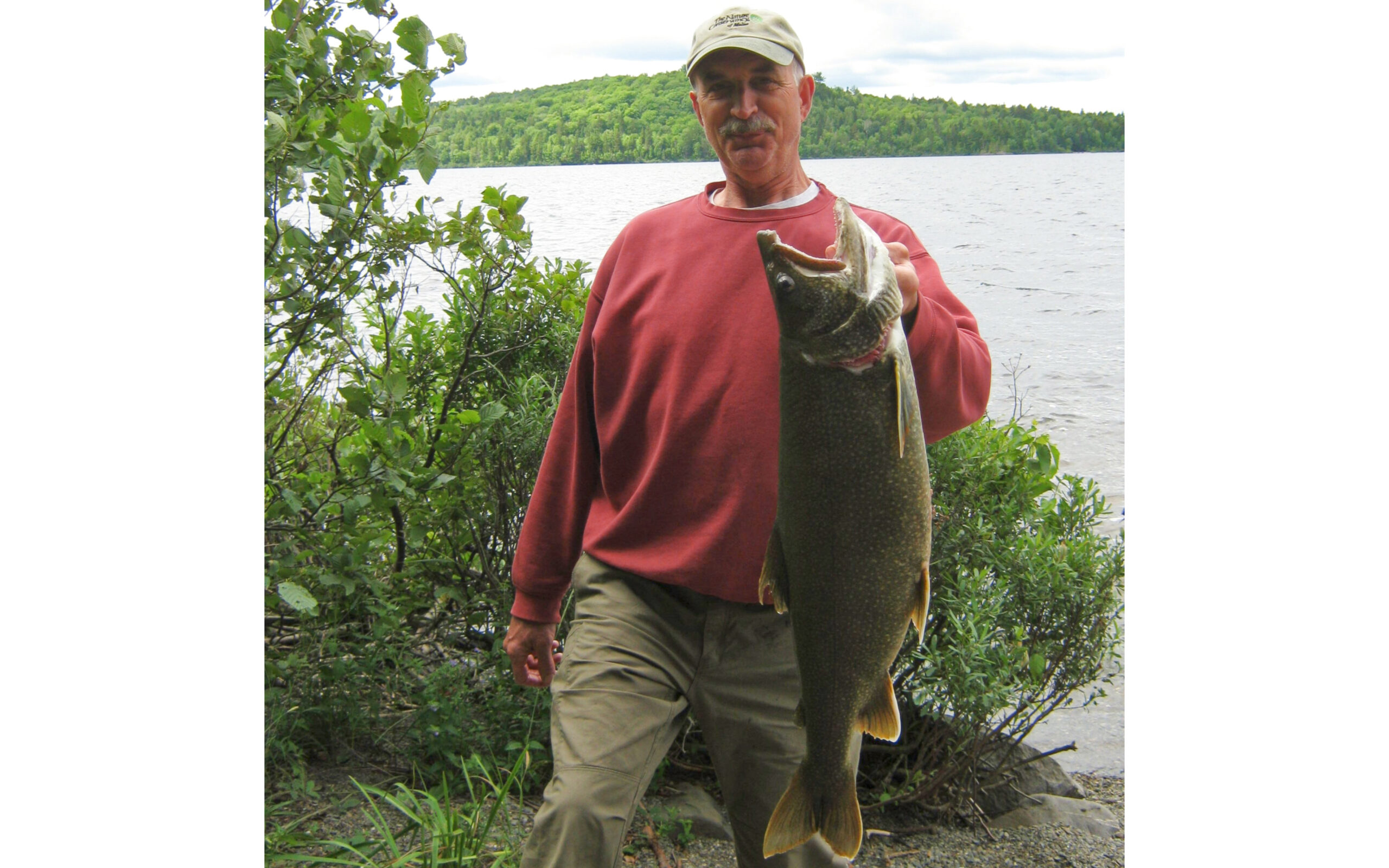A spring canoe trip on the Allagash Wilderness Waterway is an exciting way to start the open water fishing season. Combining fishing and canoeing goes together like cooking bacon and eggs for breakfast.
The smelt runs start soon after ice out on the waterway headwater lakes. Brook trout and togue follow these forage fish to their spawning areas and gorge themselves on the easy food source. If you are lucky enough to be in these spawning areas at the right time, the fishing can be unbelievable. Almost all of the major tributaries of the waterway support smelt runs. These are the “hot spots” for early season fishing.
Before the surface waters start to warm — usually in late May or early June — togue can be caught on the surface of the lakes. What could more exciting than to be paddling along the shore of Eagle Lake and hooking into a lunker togue?
Some suggested tactics: Troll a copper Weeping Willow or Rapala lure behind the canoe as you paddle along the headwater lakes. Put a small split shot sinker ahead of the lure about 16 inches to get it just under the surface. Camp near a thoroughfare or tributary and spin cast in the early morning or evening from the canoe at the inlet of the brook.
The native wild trout of the Allagash make for some fine table fare to supplement your menu on a canoe expedition. I like to cook brook trout in a little bacon fat after being rolled in a corn meal and flour mix.
Some advantages of a spring canoe trip — there are usually no bugs; black flies don’t typically come out until the end of May. The water in the river is normally high and you will find an abundance of fiddleheads if you look on the islands and where brooks enter the river section of the waterway.
An ideal four- or five-day paddle and cast canoe trip would be to start at Indian Stream on Eagle Lake and takeout at the Umsaskis Thoroughfare. This will take you over some of the best spring fishing waters on the AWW. An alternative four-day excursion would be to start at Churchill Depot and takeout at Michaud Farm, the river section will go pretty fast with the spring high-water.
Allow yourself some extra time on your trip if you plan on fishing. Even if you’re not a diehard angler, you won’t want to stop if the fishing is good. It can be easy to get caught-up in the frenzy when the fish are biting – please only keep what you can use.
The fishing rules change as you go down the waterway. Please familiarize yourself with the rules before your trip at: www.maine.gov/ifw .
There is some valuable information and outstanding trip planning tools on the AWW conditions and alerts page at: www.maine.gov/allagash . For safety’s sake, please stay near shore as you paddle the large headwater lakes and wear your lifejacket.
Matt LaRoche is Superintendent of the Allagash Wilderness Waterway, a Registered Maine Guide, and an avid outdoorsman. He can be reached at 207-695-2169 or at matt.laroche@maine.gov. The AWW is managed by the Maine Department of Agriculture, Conservation and Forestry’s Bureau of Parks and Lands as a wilderness canoe area.





